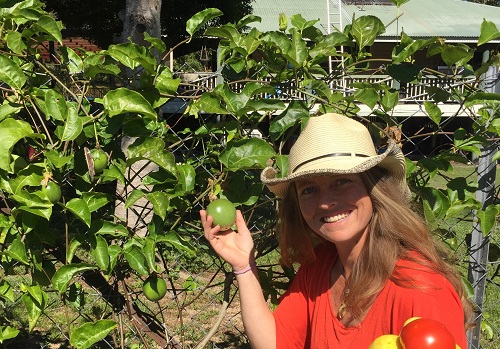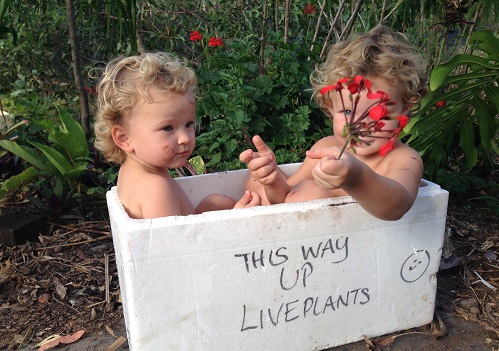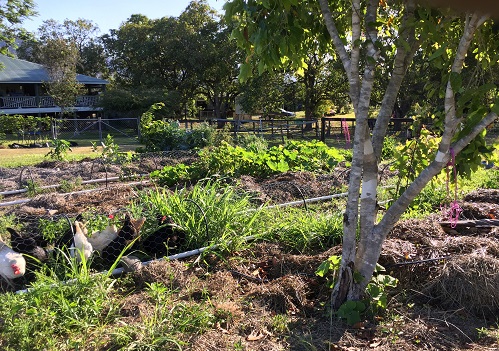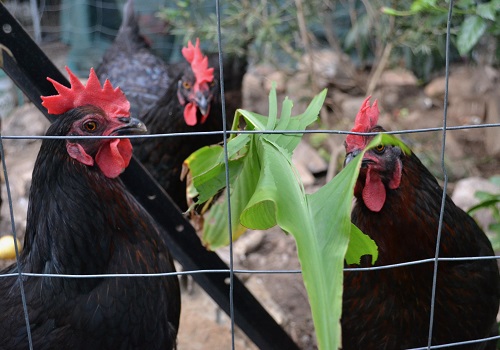Polyculture sounds complicated, but the truth is, you’re probably already practicing it. As Dr. Naomi van der Velden of the Permaculture Association of Britain points out, “Compared to a large farm field of a single crop, an allotment plot or kitchen garden is a polyculture!”
Also known as intercropping, polyculture is the simultaneous cultivation of multiple diverse crops and animal species. Although this practice makes it more difficult to harvest a specific crop, it increases diversity, improves productivity, and creates a self-sustainable pest-management regime.
The benefits of polyculture
- Simultaneously growing a diversity of crops fosters food security
- Reduces or eliminates the need for chemical pesticides and herbicides
- Increases soil fertility, moisture retention, and nutrient content
- Creates a self-sustainable ecosystem
- Encourages organic pest management
How to plan a successful polyculture bed
There are two ways you can go about planning a polyculture garden. The first, and easiest, method is the “wild” way of gardening. Basically, plant whatever you feel like, wherever you feel like. This method can be remarkably effective!
I’m a wild gardener myself. Yes, I will consider position and climate (a plant that loves shade will not thrive in full sun, for example, nor will a tropical plant thrive in a temperate climate) – but other than that, I plant them where ever I see a suitable space. Sometimes, this works like magic. Sometimes, it fails. Either way, I’m learning, increasing diversity, and often harvest a great crop. And if I don’t, another creature will.
The second way of polyculture gardening is the “planned” way. This method increases your harvest, and planning and choosing the right plants is central to that process.
A combination of fast-growing crops and those with pest deterring capabilities will ensure your desired transplants have the best chance of life and give you the best chance of a decent harvest.
The five fastest-growing vegetables are:
- Bok Choi
- Lettuce
- Mustard Greens
- Radishes
- Spinach
The 10 best plants for pest deterrence are:
- Basil
- Cilantro
- Garlic
- Leeks
- Marigolds
- Nasturtiums
- Oregano
- Onion
- Sage
- Shallots
Popular approaches to polyculture
Most small-scale polyculture projects focus on plant production, although small livestock such as rabbits and chickens may also have a role to play. The healthiest ecosystems incorporate both producing crops to feed the animals and using the results (manure) to nourish the crops.
In many perennial polyculture systems, however, biomass belts replace the need for animals and their manure. One example of this is the cultivation of nitrogen-fixing plants such as peas and vetch to nutrify comfrey plants, which are then used to mulch and fertilize intercropped beds.
Polyculture focuses on the interrelated synergy between all aspects of your homestead, backyard, or garden. As such, it is also highly variable, and what works for one person won’t necessarily be productive in another scenario.
Polyculture and its most prominent problems
Once established, polyculture is pretty much self-sustainable, but the planning process can be challenging if you want to grow a great variety of crops. Other issues can include things like:
- Intercropping requires knowledge of plant families and their needs
- Planning process can be complicated
- Planting and harvesting processes are more time-consuming
- Individual crop yields are often lower than in a monoculture
- Thorough research into companion planting is required
Introducing basic polyculture principles
A simple way to introduce basic polyculture principles to your vegetable patch:
- Start by scattering bok choi, radish, spinach, and lettuce seeds over your freshly prepared bed. These will provide groundcover and support for your target species.
- Plant a few onion bulbs and transplant some broccoli seedlings. Using transplants instead of seeds gives you faster turnaround times and more flexibility when it comes to planting times;
- After three weeks, the radishes and baby greens from your spinach, bok choi, and lettuce plants will be ready to harvest;
- Thin out the harvestable crops – particularly the smaller plants like bok choi and radishes – to make space for the lettuce heads to grow;
- Leave a few bok choi to bolt and give the bees a boost at the same time;
- Harvest lettuce from around the broccoli to provide more growing space;
- If you’re harvesting whole lettuce heads rather than leaves, plant a few cabbages in the spaces left behind to prevent weeds from popping up;
- Once the lettuce has gone to seed, introduce some carrots, Swiss chard, and green onions ready for a fall harvest.
10 top tips for polyculture pioneers
- Introduce plenty of fast-growing, shallow-rooted ground-cover crops to prevent bare earth
- Plant self-seeding companion plants to keep weeds at bay
- Sow more densely than necessary to allow for pest damage but don’t over-seed as this creates too much competition
- In the northern hemisphere, plant your tallest crops to the north to make sure your vegetables don’t out-shade their companions. In the southern hemisphere, switch it around
- Be flexible and be prepared to adapt to the season
- Don’t wait for your plants to mature before harvesting
- Pull plants out by the roots to make way for your next crops
- Use plenty of liquid manure and compost to ensure optimum productivity
- Fill any gaps quickly to prevent weeds from taking root
- Look out for wilting in hot and windy conditions
Polyculture has many benefits, from boosting soil fertility to natural pest control and reduced labor-intensity. Take a leaf out of the African approach to intercropping by following the “Three Sisters” regime and planting beans, maize, and squash together. Alternatively, create a more complex polyculture experiment by growing mushrooms on the paths between your beds and using biomass belts to feed your fertilizer crops.
Whatever your approach, the results will be the same – a more self-sustainable ecosystem in which each plant, animal, and microbe has a vital role, leaving you to enjoy the fruits of their labors instead of your own.
Elle Meager is a qualified permaculture teacher, master gardener, and homesteading mom of 2 girls. When she’s not in her food forest or planting weird and wonderful edible plants, you’ll find her writing for her blog, Outdoor Happens. She is dedicated to helping people homestead, create amazing gardens, grow their own food, and enjoy nature. A better world truly starts in your own backyard!





